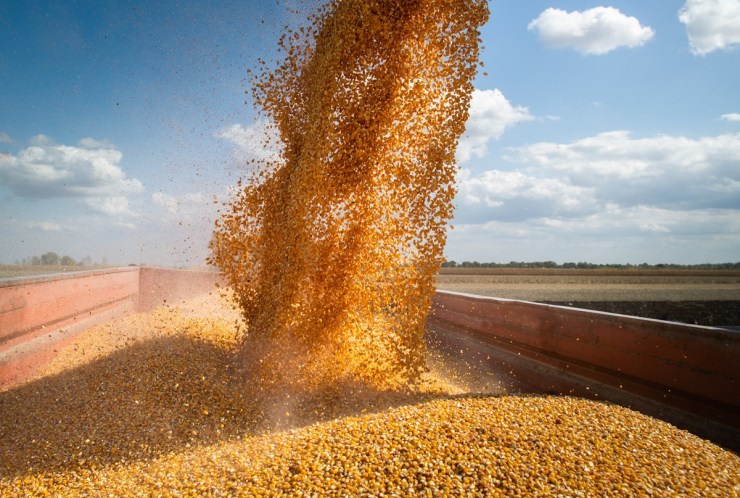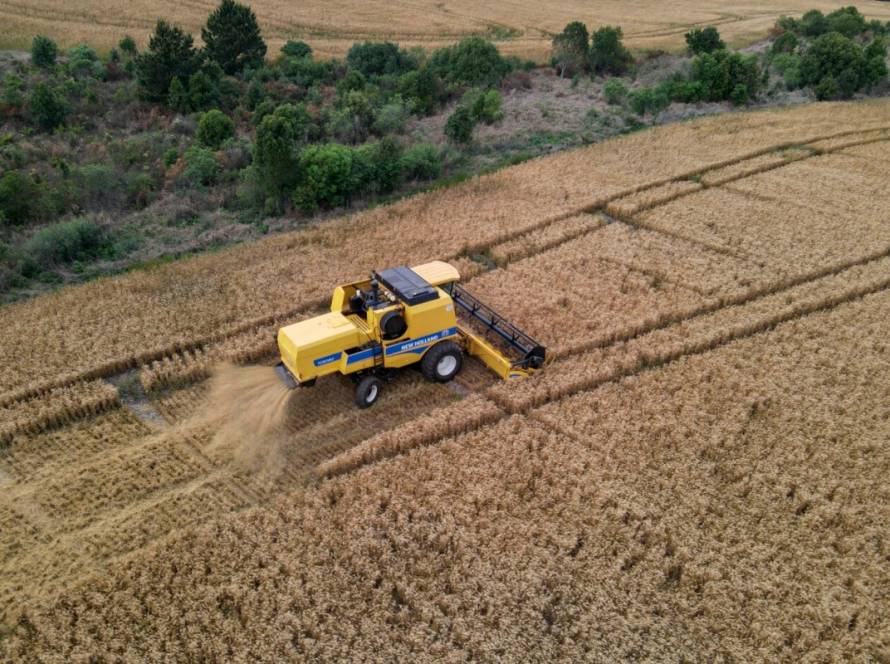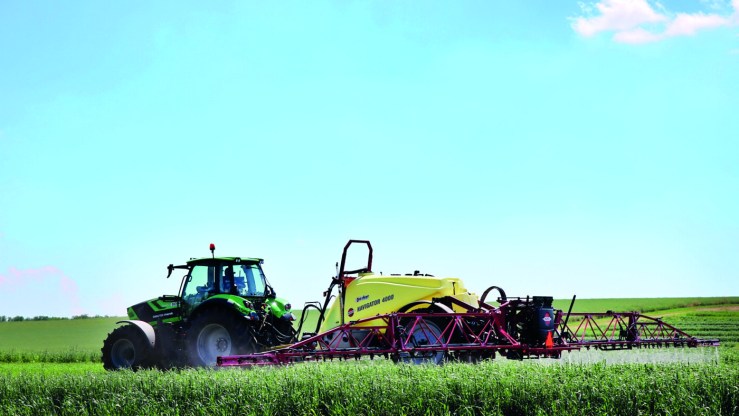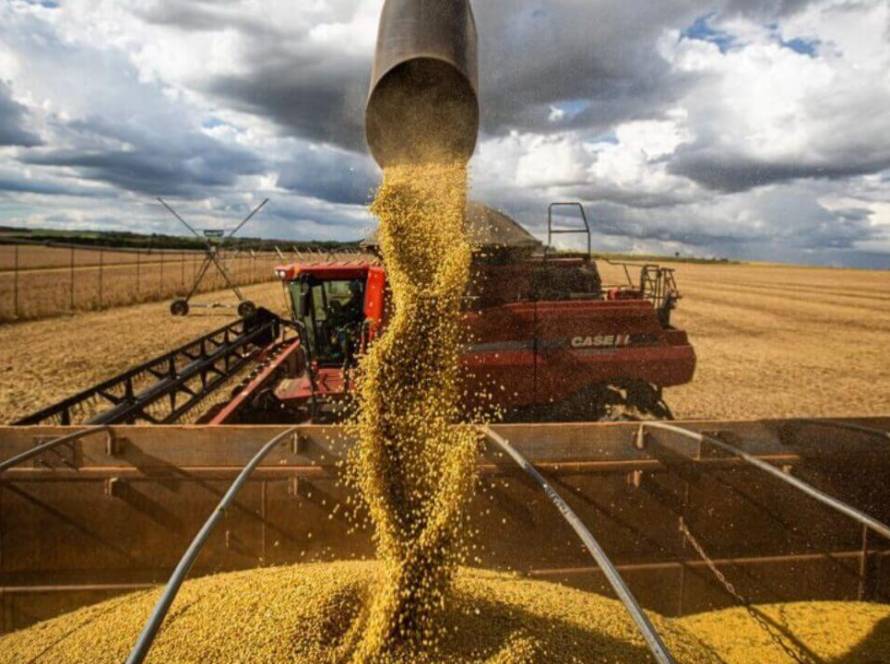The irregular spatial distribution of rainfall maintained disparities in the productive potential of soybeans. According to the Informativo Conjuntural, released last Thursday (13) by Emater/RS-Ascar, in regions with lower rainfall, especially in the Northwest and Middle Plateau, the combination of an intense heat wave (from March 3 to 8) and insufficient soil moisture increased losses. Crops showed symptoms of water and heat stress.
In general, the harvest in the State is still in its initial phase, at a slow pace (5%). Another 33% are in maturation; 48% in grain filling; 12% in flowering and 2% in germination and vegetative development. Preliminary results confirm the great variability in production potential, influenced by the volume of rainfall throughout the cycle, the sowing season and the characteristic response of each cultivar.
The irregularly distributed rainfall recorded at the end of February and on March 9th benefited soybean crops in regions where the volumes were adequate to replenish soil moisture at field capacity. In these areas, leaf turgor recovery was observed and physiological damage resulting from the previous water deficit was interrupted.
 Producers continued to apply macro and micronutrient-based foliar fertilizers to stimulate vegetative development in late-planted crops. In crops established in December, priority was given to the application of physiological regulators to set pods and optimize grain filling, aiming to mitigate residual production losses.
Producers continued to apply macro and micronutrient-based foliar fertilizers to stimulate vegetative development in late-planted crops. In crops established in December, priority was given to the application of physiological regulators to set pods and optimize grain filling, aiming to mitigate residual production losses.
The cultivation area initially projected by Emater/RS-Ascar totaled 6,811,344 hectares. However, there was a reduction in the area of 1.2%, or 6,729,354 hectares, mainly due to the difficulty of implementation at the recommended time. Also due to the drought, the average productivity initially projected at 3,179 kg/ha was reduced (20.3%) to 2,240 kg/ha. Water shortages also caused a reduction of 17.4% in production, estimated at 15.07 million tons.
Corn
Harvest progressed briefly and reached 69%, as producers prioritize operations on other crops, such as soybeans and rice. Another 14% are in maturation; 9% in grain filling; 4% in flowering and 4% in germination and vegetative development.
Due to the drought, productivity was reestimated by Emater/RS-Ascar at 6,866 kg/ha, corresponding to a reduction of 3.5% in the 7,116 kg/ha projected at the planting season. Despite this disappointment, productivity is expected to be 21.6% higher compared to the 5,646 kg/ha achieved in 2023/2024 (IBGE).
Crops planted in late December and January benefited from recent rains, although they show signs of water deficit in part of the state. For the 2024/2025 Harvest, Emater/RS-Ascar initially estimated the cultivation of 748,511 hectares, reassessed to 696,587 hectares actually planted. Thus, cereal production should reach 4,782,704 tons.
Corn silage

The silage corn harvest is at an advanced stage, and approximately 80% of the cultivated area has been ensiled. There are 10% of crops remaining in vegetative development, sown in the second crop, and 10% between the reproductive phases and the ideal cutting point. The greater occurrence of rainfall since the end of January allowed for adequate grain formation, favoring the quality of the silage. However, the lack of rainfall between the end of December and the first half of January caused a decrease in plant size in some crops, limiting productivity in terms of green mass.
The average productivity for the 2024/2025 harvest was reassessed at 36,760 kg/ha, representing a reduction of 6.8% in the 39,457 kg/ha estimated at the time of planting. Despite the reduction in the initial assessment, the volume is 17.4% higher than that obtained in the 2023/2024 Harvest (31,323 kg/ha). For the current Harvest, the area effectively planted is 336,531 hectares.
Rice
The rice harvest advanced to 20% of the cultivated area due to reduced rainfall during the period, which minimized operational interruptions and optimized access to crops.
The current phenological distribution indicates 41% of areas in the maturation phase, 33% in grain filling and 6% in flowering. In plots in reproductive stages (flowering and filling), phytosanitary monitoring is maintained with preventive applications of fungicides and insecticides, especially in productions with greater technological investment.

Photos: Shutterstock
According to the Rio Grande do Sul Rice Institute (IRGA), the area actually planted was reassessed to 970,194 hectares. Emater/RS-Ascar re-estimated the average productivity to 8,376 kg/ha, recording convergence between observed and projected data. There was only a reduction of 0.9% in relation to the 8,478 kg/ha estimated in the pre-plantation phase of the crops.
Beans 1st harvest
The harvest of the first bean crop reached approximately 65% of the cultivated area in the State. The remaining crops, sown late, are located in Campos de Cima da Serra, and are in the grain filling and early maturation phase. Some areas were desiccated to standardize maturation and facilitate harvesting. The crops are in adequate health and maintain their production potential, which should be around 2,400 kg/ha. For the 2024/2025 Harvest, Emater/RS-Ascar reestimated the cultivated area to 27,149 hectares, and the average productivity in the State to 1,838 kg/ha.
Beans 2nd harvest
The implementation of the second bean harvest registered a decline mainly due to the critical water deficit during the ideal sowing window and the low water recharge of the reservoirs, preventing continuous irrigation throughout the phenological cycle. In addition, the devaluation of prices reduced the economic attractiveness, discouraging investments. It is estimated that 11,913 hectares were effectively sown, which corresponds to a reduction of 46.5% of area in relation to the previous harvest. Productivity is estimated at 1,527kg/ha.
For more information, visit here.





